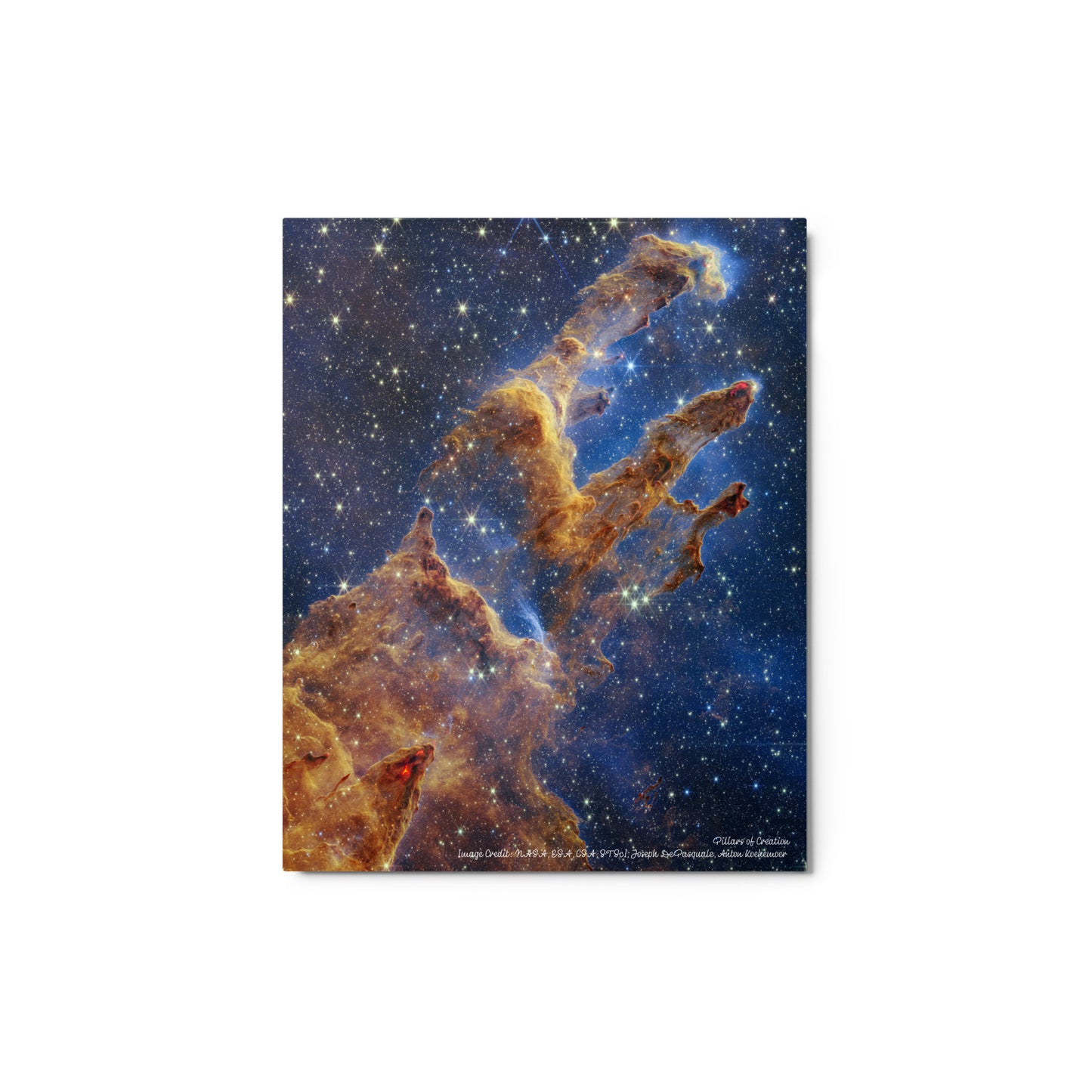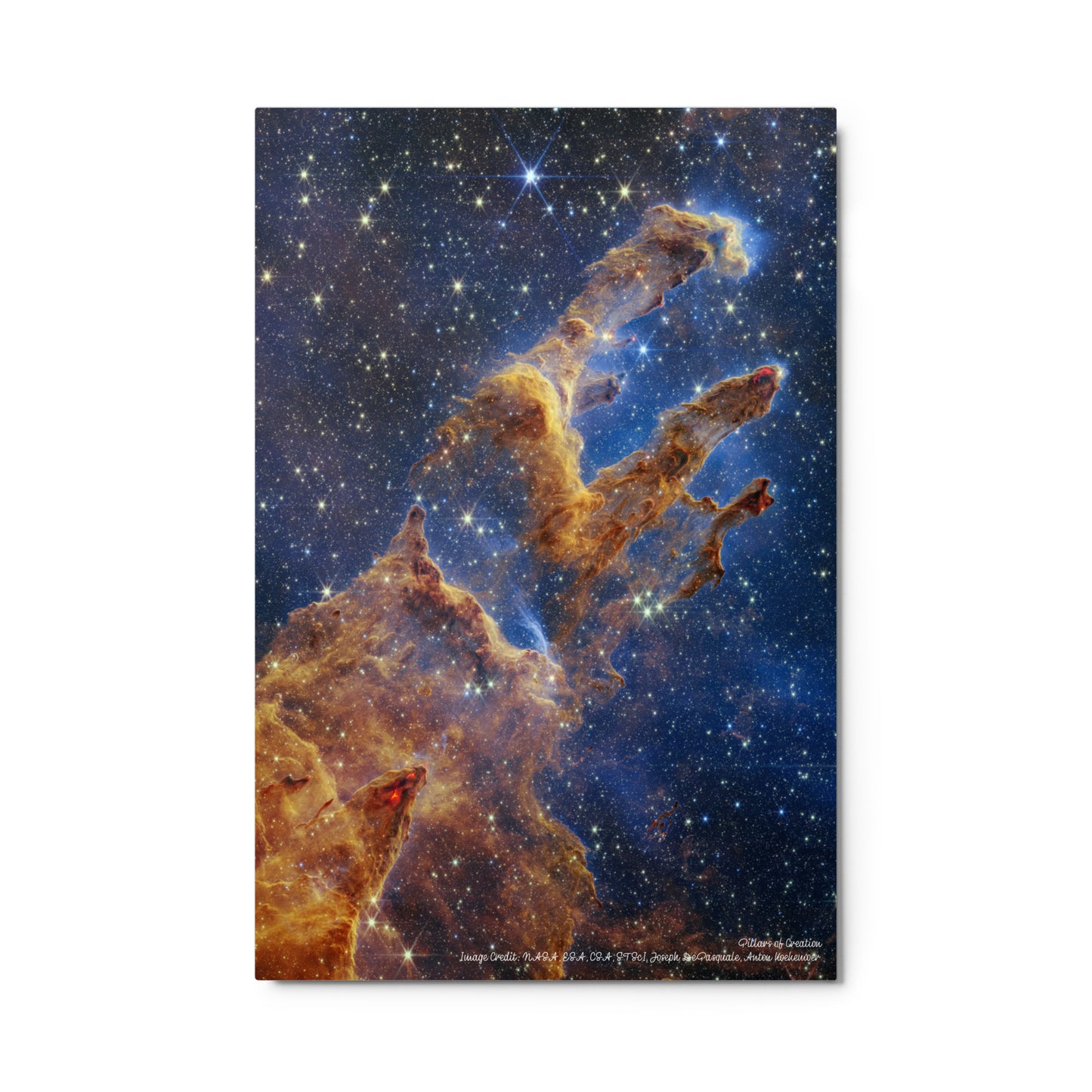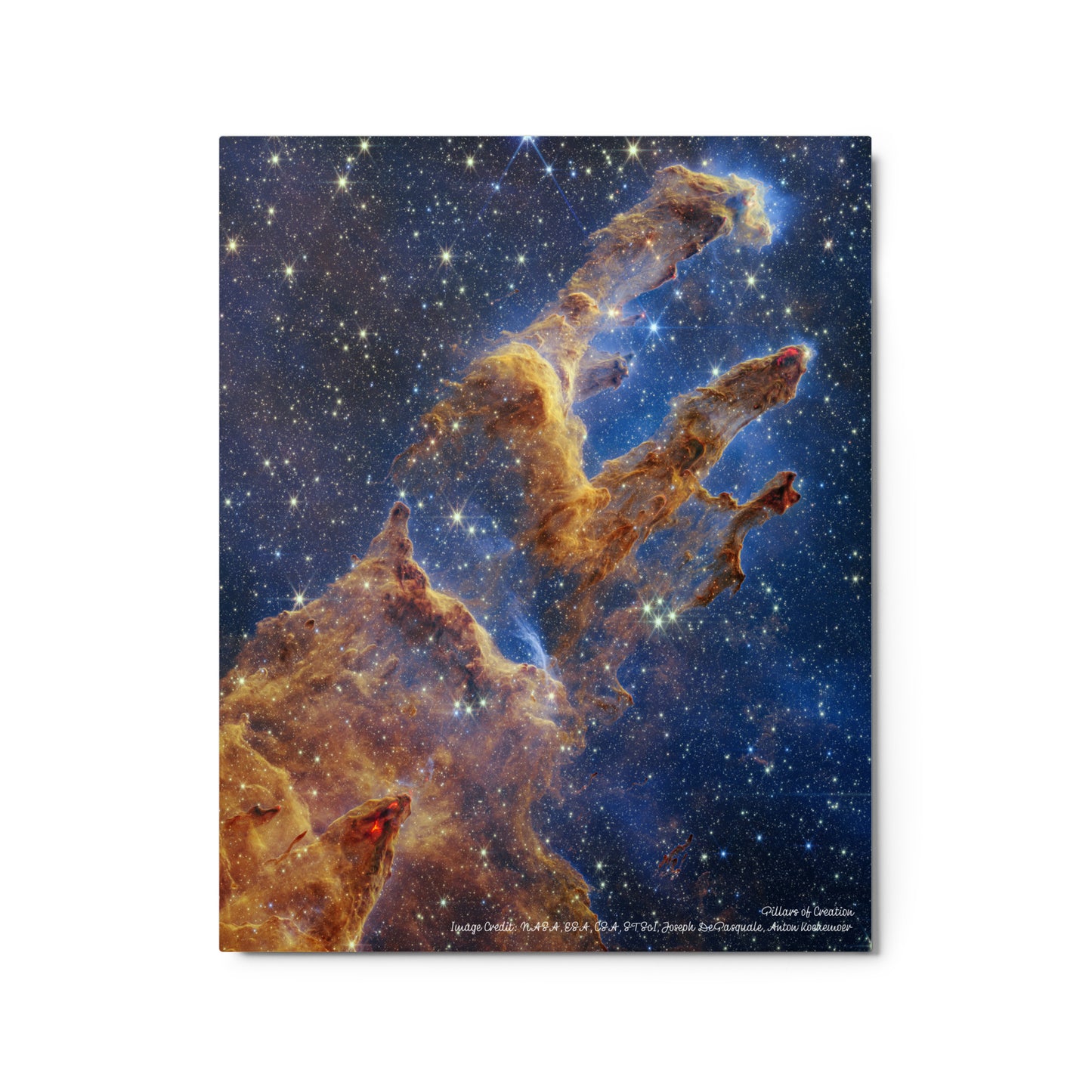Pillars of Creation, Metal prints
Pillars of Creation, Metal prints
Couldn't load pickup availability
Bring the Universe Home: High-Quality Metal Prints
Transform your space with stunning cosmic wonders. These high-quality metal prints showcase the universe's vibrant colors and intricate details in a way that has never been seen before.
Lasting Visions of the Cosmos:
Scratch- and Fade-Resistant: Crafted with a durable aluminum surface, these prints withstand everyday wear and tear.
Exceptional Vibrancy: The meticulous printing process utilizes the metal's reflective properties to create stunningly vivid colors that bring the cosmos to life.
Easy to Care For: Simply wipe clean with a damp cloth, making them ideal for high-traffic areas.
Multiple Sizes Available: Find the perfect fit for your space, whether you're seeking a captivating focal point or a mesmerizing gallery wall.
Modern Elegance:
These metal prints boast a sleek and contemporary aesthetic, a touch of sophistication. The artwork appears almost luminescent against the wall, adding a unique dimension to your décor.
Pillars of Creation:
The Pillars of Creation are set off in a kaleidoscope of color in NASA's James Webb Space Telescope's near-infrared-light view. The pillars look like arches and spires rising out of a desert landscape, but they are filled with semi-transparent gas and dust and are ever-changing. This is a region where young stars are forming – or have barely burst from their dusty cocoons as they continue to create.
Newly formed stars are the scene-stealers in this Near-Infrared Camera (NIRCam) image. These are the bright red orbs that sometimes appear with eight diffraction spikes. When knots with sufficient mass form within the pillars, they start to collapse under their own gravity, slowly heat up, and eventually shine brightly.
Along the edges of the pillars are wavy lines that look like lava. These are ejections from stars that are still forming. Young stars periodically shoot out supersonic jets that can interact with clouds of material, such as these thick pillars of gas and dust. This sometimes also results in bow shocks, which can form wavy patterns similar to those a boat creates as it moves through water. These young stars are estimated to be only a few hundred thousand years old and will continue to form for millions of years.
Although it may appear that near-infrared light has allowed Webb to "pierce through" the background to reveal great cosmic distances beyond the pillars, the interstellar medium stands in the way, like a drawn curtain.
This is also the reason why there are almost no distant galaxies in this view. This translucent layer of gas blocks our view of the deeper universe. Plus, dust is lit up by the collective light from the packed "party" of stars that have burst free from the pillars. It's like standing in a well-lit room looking out a window – the interior light reflects on the pane, obscuring the scene outside and, in turn, illuminating the activity at the party inside.
Webb's new view of the Pillars of Creation will help researchers revamp models of star formation. By identifying far more precise star populations, along with the quantities of gas and dust in the region, they will begin to build a clearer understanding of how stars form and burst out of these clouds over millions of years.
Constellation: Serpens
Dimensions: Image is approximately 8 light-years across.
Distance: 6,500 light-years (2,000 parsecs)
Exposure Dates: 14 Aug 2022
Image Credit: NASA, ESA, CSA, STScI; Image Processing: Joseph DePasquale (STScI), Anton Koekemoer (STScI), Alyssa Pagan (STScI)
Share




